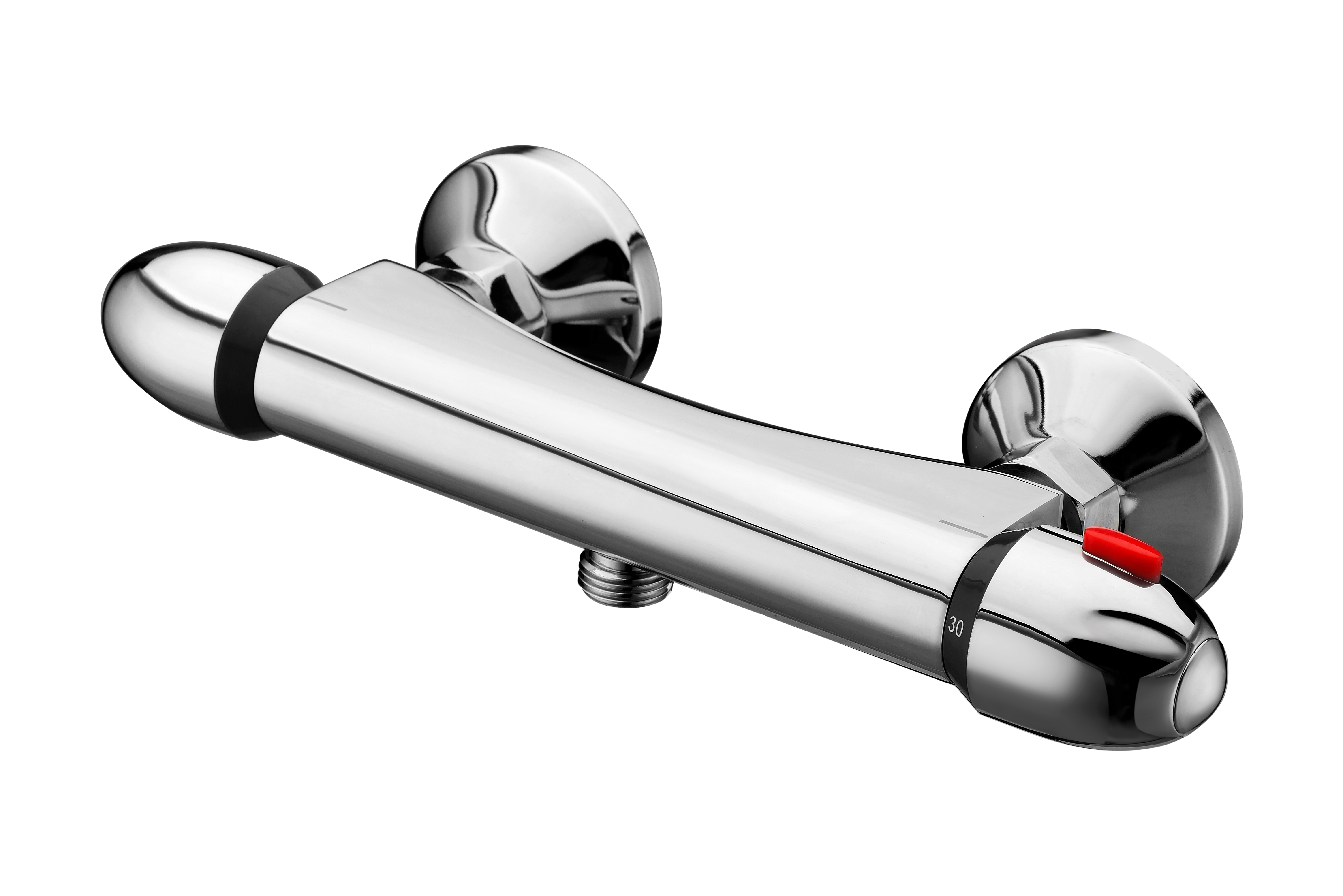שיקולים חיוניים בבחירת ברזי חדרי רחצה למלונות סיבוב מים לحمام בחירת
בחירת הנכון סיבוב מים לحمام עיצובים לנכסים של בתי מלון דורשים שיקול דעת זהיר של גורמים מרובים שמעבר להיבט האסתטי בלבד. בסביבה הדורשת של סביבות אירוח, ברזים חייבים לעמוד בשימוש מתמיד תוך שמירה על תפקודם ומראהם. למפיצים, בחירה מושכלת של התקנים אלו יכולה להשפיע משמעותית על שביעות הרצון של הלקוחות ועל יעילות העלויות לאורך זמן.
תעשיית האירוח מציבה אתגרים ייחודיים כאשר מדובר בתקני שירותים. עם מאות אורחים העוברם דרכם מדי חודש, ברזים במרחצאות במלון חייבים לספק תפקוד רציף תוך עמידה בבلى, איטום ונזקים פוטנציאליים. הבנת הדרישות הללו עוזרת למפיצים להציע המלצות אשר משרתות באמת את צורכי הלקוחות שלהם.
חומרים מרכזיים ומאפייני בניה
תבניות מתכת מתקדמות
יסוד של עיצובי ברז מקלחות עמידים מתחיל בבחירת החומר. מבנה מנחושת מוצקה מציעה עמידות גבוהה בהשוואה לאלומיניום או פלסטיק. יש לחפש ברזים עם נחושת בעלת אחוז נחושת גבוה, שמספקת עמידות גבוההagainst corrosion וגם עמידות מבנית. רכיבי פליז בשטחים עם בלאי גבוהים מוסיפים עוד שכבה של עמידות.
גימורי פני השטח גם הם ממלאים תפקיד מכריע באורך החיים. ציפויי PVD (Physical Vapor Deposition) מציעים עמידות יוצאת דופן לשריטות ולכתמים בהשוואה לציפוי כרום מסורתי. עבור נכסי יוקרה, גימורי ניקל מוברש וברונזה משופשפת בשמן לא רק מספקים אסתטיקה ייחודית אלא גם מסייעים להסוות כתמי מים וטביעות אצבע.
איכות הרכיבים הפנימיים
ตลับแบบเซรามิกคาร์ทริดจ์ถือเป็นมาตรฐานทองคำในปัจจุบันสำหรับกลไกวาล์วภายใน องค์ประกอบเหล่านี้มีสมรรถนะเหนือกว่าแหวนยางแบบดั้งเดิมมาก และมักจะมีอายุการใช้งานยาวนานตลอดอายุของก๊อกน้ำด้วยการบำรุงรักษาเพียงเล็กน้อย ควรเลือกโมเดลที่มีแผ่นเซรามิกเสริมความแข็งแรงด้วยเพชร เพื่อความทนทานสูงสุด
ตัวควบคุมการไหลของน้ำขั้นสูงช่วยรักษาประสิทธิภาพการทำงานอย่างสม่ำเสมอ พร้อมทั้งเป็นไปตามมาตรฐานด้านประสิทธิภาพพลังงาน การออกแบบก๊อกน้ำสำหรับห้องน้ำที่ดีที่สุดจะมีตัวกรองเศษสิ่งสกปรกและระบบป้องกันน้ำลวก แต่ยังคงแรงดันน้ำให้เพียงพอ ซึ่งเป็นคุณสมบัติสำคัญที่ส่งผลต่อความพึงพอใจของแขกในโรงแรม
องค์ประกอบการออกแบบสำหรับการประยุกต์ใช้ในธุรกิจบริการ
היקשים ארגונומיים
การออกแบบคันโยกส่งผลอย่างมากทั้งในแง่การใช้งานและความทนทาน คันโยกแบบคันลั่น (Lever-style) มีความเหมาะสมที่สุดสำหรับการใช้งานในโรงแรม เนื่องจากสามารถใช้งานได้สะดวกสำหรับผู้ใช้ทุกวัยและทุกความสามารถ พร้อมทั้งลดจุดที่จะเกิดการสึกหรอ แบบคันโยกเดี่ยวสามารถช่วยลดความยุ่งยากในการบำรุงรักษา แต่ต้องได้รับการออกแบบให้ป้องกันไม่ให้เกิดแรงกระทำมากเกินไปต่อกลไกภายใน
גובה ו tầm הזרימה של הזריין מחייבים חשיבה קפדנית בהתאם להגדרת הכיור. עיצובים אופטימליים של ברזים לאמבטיה מספקים גובה פנוי מספק להטחת ידיים תוך מניעת נטיפת מים – תלונה נפוצה באמבטיות מלון. עיצובים מודרניים כוללים לעיתים קרובות מפזרים שמעוצבים את זרם המים למטרה של נוחות ושליטה.
מאפיינים שמזילים את עלות התפעול
חלקים עם משטחים נקיים בקלות וחלקים נגישים מקצרים את זמן התפעול ומעלותיו. יש לחפש עיצובים עם מעברים חלקים ופינות מינימליות בהן עשן סידן עשוי להצטבר. צינורות חיבור מהירים וחלקים תומכים נגישים מקלים את ההתקנה והטיפול בעתיד.
רכיבים מודולריים מאפשרים החלפה חלקית במקום הסרה מלאה של הברז בעת הצורך בהחלפה. הגישה הזו מפחיתה את זמן השבת ואת עלויות ההחלפה תוך שמירה על שלמותה האסתטית של ההתקנה.
תקני יעילות וקיימות
תכונות שימור מים
עיצובי ברזים מודרניים עבור חדרי רחצה חייבים לאזן בין נוחות האורח לבין אחריות סביבתית. מגבילי זרם ומפזרי אוויר יכולים להפחית את צריכה המים מבלי לפגוע בחווית המשתמש. יש לחפש דגמים עם תעודת WaterSense שמתאימים להנחיות ה-EPA תוך שמירה על קצב זרם מספק לאישור האורח.
טכנולוגיות ברז חכם צוברות תאוצה במבנים יוקרתיים. הפעלה בלי מגע לא רק מעודדת היגיינה אלא גם יכולה להפחית באופן ניכר את בזבוז המים באמצעות שליטה מדויקת בזמן ובספיקה. תכונות אלו עשויות לגרור עלויות התחלתיות גבוהות יותר אך מציעות חיסכון ארוך טווח בפעילות.
השלבויות ביעילות אנרגטית
עבור מבנים המשלבים מערכות הפצה מחודשת של מים חמים, בחירת עיצובי ברזים שמתאימים להתקנות אלו הופכת להיות קריטית. תכונות למניעת חمولות חייבות לעבוד בצורה חלקה עם מערכות הניהול של הטמפרטורה בכל המבנה, תוך שמירה על ביצועים עקביים.
עיצובי ברזים חסכוניים במטבח יכולים לתרום למטרות האشهاد LEED ולიזומות קיימות אחרות. שקלו כיצד מפרטי הברז תואמים את המטרות הסביבתיות הרחבות של הנכס ואת דרישות הרגולציה.

ניתוח השקעה וערך
עלות בעלות כוללת
המחיר הראשוני מהווה רק רכיב אחד בהשקעה הכוללת בברזי חדרי רחצה במלון. חשבו את הערך הארוך-טווח על ידי שיקול של גורמים כגון תקופת האחריות, משך החיים המוערך, ודרישות התפעול. לעיצובים מתקדמים של ברזי חדר רחצה יש לרוב נימוק כלכלי עבור עלויות ראשוניות גבוהות יותר, בזכות פחות תחלופות וتكלי תפעול נמוכות יותר.
השלימו בניתוח עלויות ההתקנה ותיקונים פוטנציאליים בעת הערכת דגמים שונים. סטנדרטיזציה של עיצובי ברזים במספר נכסים יכולה להפוך את תהליכי התפעול לפשוטים יותר ולצמצם את דרישות המלאי של חלפים, וכך לייצר חיסכון נוסף.
הסכםarranty ושירותים
הגנת האחריות המפורטת מספקת הגנה חיונית על השקעה משמעותית בברזים. יש להעריך לא רק את משך האחריות אלא גם את התנאים הספציפיים בנוגע לשימוש מסחרי ולתולדות היצרן honouring בקשות. תמיכה חזקה של היצרן וחלפים זמינים מובטחים תפעול חלק לאורך זמן.
יש לשקול יצרנים המציעים ערוצי תמיכה מסחריים מובחנים וזמינות מואצת של חלפים. שירותים אלו יכולים להפחית משמעותית את זמן השבתה ואת עלות התפעול לאורך מחזור החיים של ההתקנה.
שאלות נפוצות
מהו תוחלת החיים הממוצעת של ברז חדר אמבטיה במלון?
ברזים איכותיים לאמבטייה נוטים להחזיק 15–20 שנה ביישומים של מלון, בתנאי תחזוקה מספקת. עם זאת, משך החיים בפועל תלוי באיכות המים, דפוסי השימוש ואמצעי התחזוקה. דגמים מתקדמים עם פטישים חשמליים וגימורי PVD נוטים לעבור את הממוצע.
איך מתפקדים ברזים אוטומטיים בהשוואה לדגמים הקלאסיים לשימוש במלונות?
עיצובי ברזים אוטומטיים מציעים יתרונות של היגיינה מיטבית ושמירה על מים, אך עשויים להזדקקו לתחזוקה מורכבת יותר ול החלפת סוללות. היעילות שלהם בסביבות מלון תלויה במקורות כוח אמינים ובאיפוס נכון של החיישנים. מרבית המנחות מגלות כי היתרונות עולים על עלויות התחזוקה הנוספות.
איזה לוח זמנים מומלץ לתחזוקת ברזים בבתי כנסים של מלון?
תחזוקה שוטפת צריכה לכלול ניקוי חודשי של מסננים, בדיקה רבעונית של חיבורים וחומות, ובדיקה שנתית של רכיבים פנימיים. מנחות עם מים קשים עשויות להזדקק לניקוי תכוף יותר מפקעות. הקמת תוכנית תחזוקה מניעה עוזרת לזהות בעיות פוטנציאליות לפני שהן משפיעות על חוויית הלקוח.

